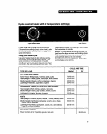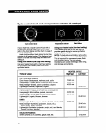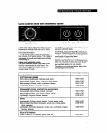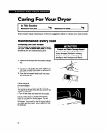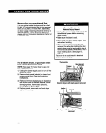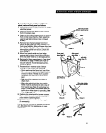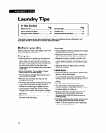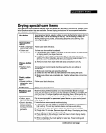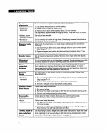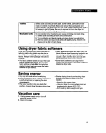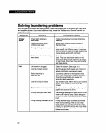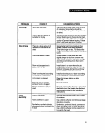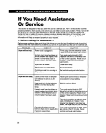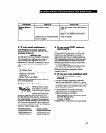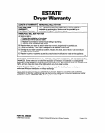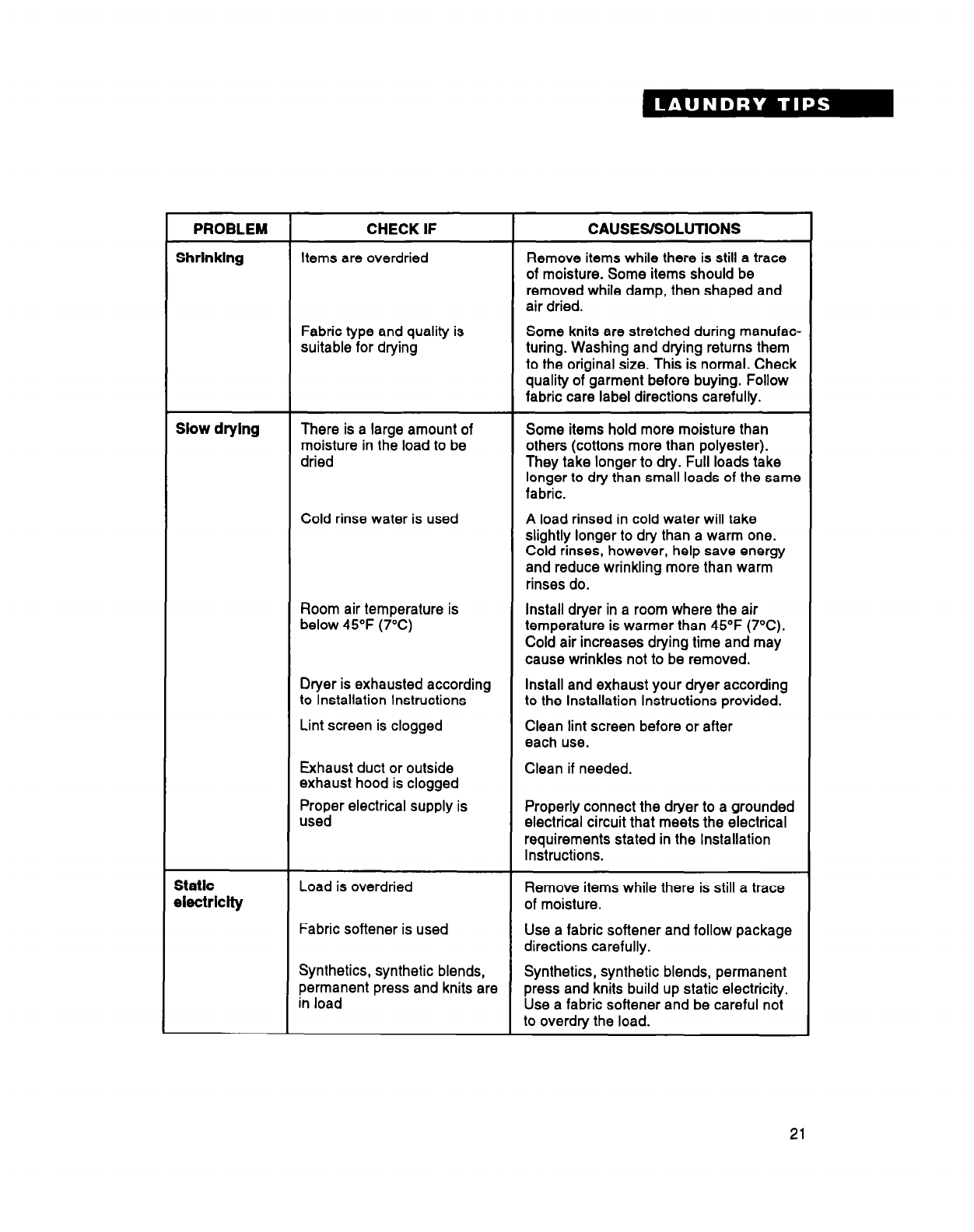
PROBLEM CHECK IF
Shrlnklng
Items are overdried
CAUSES/SOLUTIONS
Remove items while there is still a trace
of moisture. Some items should be
removed while damp, then shaped and
air dried.
Fabric type and quality is
suitable for drying
Some knits are stretched during manufac-
turing. Washing and drying returns them
to the original size. This is normal. Check
quality of garment before buying. Follow
fabric care label directions carefully.
Slow drying
There is a large amount of
moisture in the load to be
dried
Some items hold more moisture than
others (cottons more than polyester).
They take longer to dry. Full loads take
longer to dry than small loads of the same
fabric.
Cold rinse water is used
A load rinsed in cold water will take
slightly longer to dry than a warm one.
Cold rinses, however, help save energy
and reduce wrinkling more than warm
rinses do.
Room air temperature is
below 45°F (7°C)
Install dryer in a room where the air
temperature is warmer than 45°F (7°C).
Cold air increases drying time and may
cause wrinkles not to be removed.
Dryer is exhausted according
to Installation Instructions
Lint screen is clogged
Install and exhaust your dryer according
to the Installation Instructions provided.
Clean lint screen before or after
each use.
Exhaust duct or outside
exhaust hood is clogged
Proper electrical supply is
used
Clean if needed.
Properly connect the dryer to a grounded
electrical circuit that meets the electrical
requirements stated in the Installation
Instructions.
Static
electricity
Load is overdried
Remove items while there is still a trace
of moisture.
Fabric softener is used
Use a fabric softener and follow package
directions carefully.
Synthetics, synthetic blends,
Synthetics, synthetic blends, permanent
permanent press and knits are
press and knits build up static electricity.
in load
Use a fabric softener and be careful not
to overdry the load.
21



